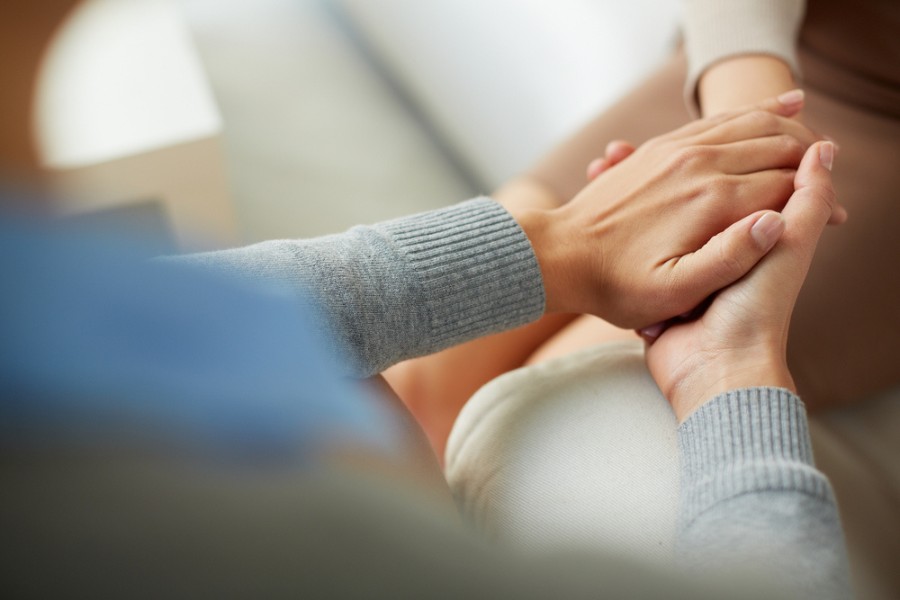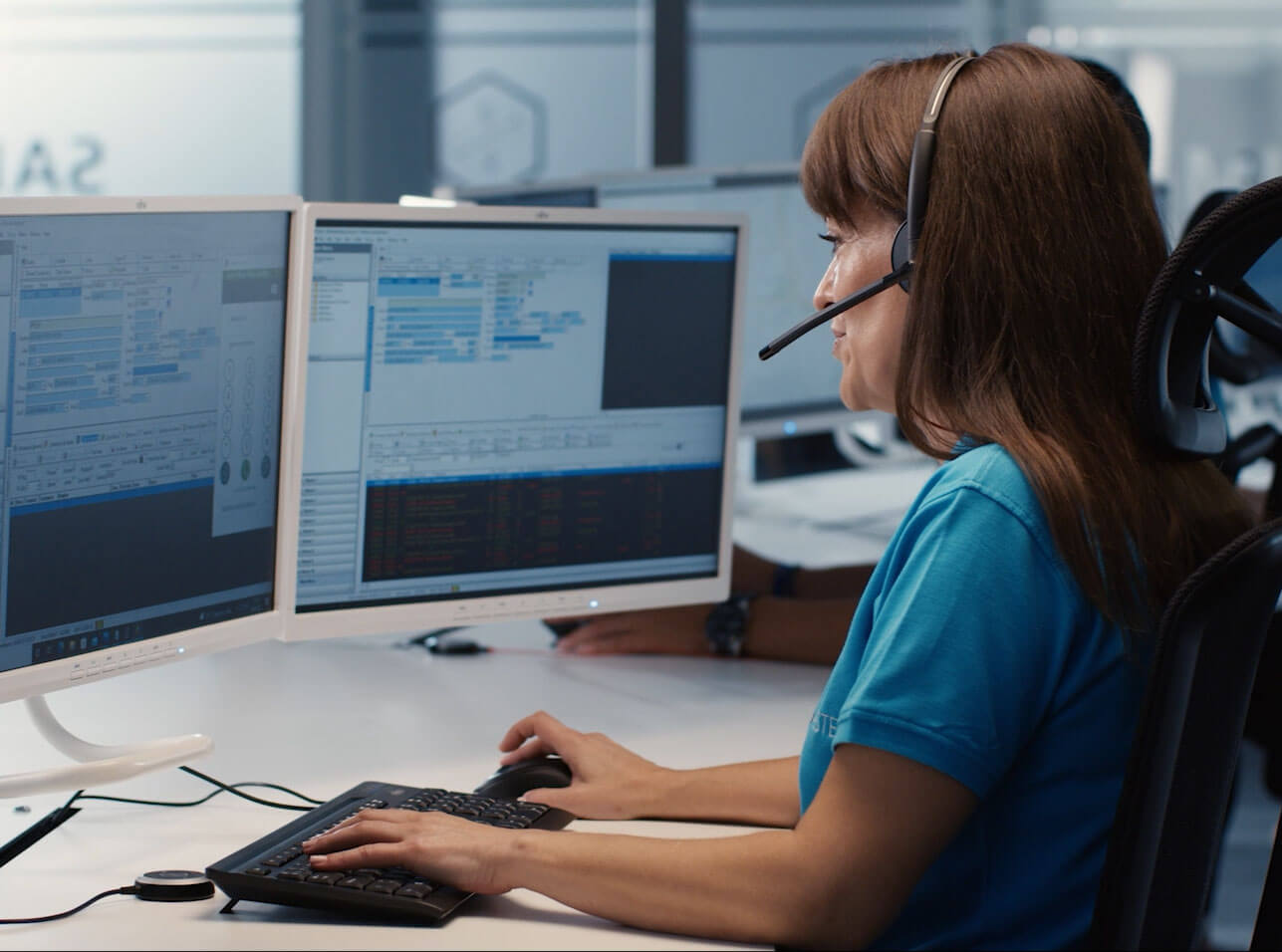Falls in the elderly are the most frequent accident in the home and the most feared by family members as they pose a health risk and a loss of autonomy. Half of the elderly people who suffer a fall suffer another fall in less than a year.
With the passage of time, the body becomes weaker and falls are more frequent for our elders.
What are the main causes of falls in the elderly?
The causes of falls may be due to different factors. Normally they are intrinsic, our body gets older and loses visual acuity, weakness in the musculature and therefore there is a greater probability of falls. Other times they are extrinsic to our own body, unsafe surfaces such as a slippery floor, objects in our path, etc.
The following are the most important factors that must be taken into account in order to prevent falls in elderly people
Functional factors
They are related to the body's capabilities, such as sensory deficits, visual disturbances, hearing loss, limb function or even mental status.
Pharmacological factors
As we grow older, it is more likely to include/incorporate the taking of medications in our daily routine. Medical treatments with different types of medicines that act on the central nervous system, hypotensors... can be a determining factor for this type of domestic accidents. A polymedicated patient has a higher risk of suffering falls and special attention should be paid to them.
Situational factors
They refer to the inconveniences we encounter when walking through any space: lack of light, objects on the floor, clutter, carpets without anti-slip mats, cables, steps, lack of handholds or handrails to make walking easier, etc.
How to prevent and avoid falls in elderly people?
Avoiding falls is possible. Prevention is essential to minimize the risk of falls for the elderly, especially when they are alone in their homes. By following these tips, we will be closer to minimizing the number of falls:
Physical exercise
Strengthening the body is important. Normally people who suffer falls do not do any type of exercise, if we add to this any pathology in their limbs or loss of dexterity that makes it difficult for them to maintain balance and walk, the result will be a possible fall, so the body must be exercised so that this does not happen and stay active. Performing physical exercises on a routine basis will allow us to achieve the desired agility.
Physiotherapy
Relying on expert physiotherapists is a very good option to exercise the musculature of our elders, through small guided exercises they can increase their resistance, balance, agility and many other necessary conditions to strengthen the body and improve the physical condition of our elders to prevent falls.
Canes and walkers
Elderly people who use these technical aids in the street, very often do not use them at home, due to the confidence of moving around in a safe and familiar environment. It is important that they are also used when moving around the house, even if only for short periods of time. Balance is essential, so when this quality has been lost with age or due to illness, it is best to use support elements that facilitate and secure each step we take when walking.
Canes and walkers provide us with the support we need, they will be our best allies, but their choice and correct use is important. Canes or walkers should be chosen that are made of resistant materials that support our weight and resist shocks, that have non-slip parts and that allow us to adjust them to our height.
Monitoring medical treatments
The correct taking of medications, as well as periodic check-ups are always necessary for the control of the health of all people, especially our seniors, it is key to have the biomedical parameters controlled and to verify them with certain continuity to avoid any worsening that could lead to small domestic accidents, especially when they spend time alone.
Household items
Having a safe environment is essential to prevent falls in the elderly. Most of these incidents occur in our own home, so make sure that your home does not pose a risk to anyone. With a few basic practices you will be able to minimize the number of these falls:
-Maintain proper lighting: turning on the lights when getting up at night or having motion sensors that activate the light will prevent falls due to lack of visibility.
Walkable floors, without carpets or well secured to the floor with non-slip meshes, without objects or cables that interrupt the passage to other rooms, tidy spaces. This way we will avoid possible trips.
-The replacement of bathtubs with showers improves the accessibility of the toilet for the elderly, preventing possible accidents.
-Appropriate footwear and clothing. The foot must be well fastened to the footwear, avoiding the use of flip-flops or shoes that leave slack in the feet, as well as soles that are not slippery. As for clothing, it is advisable not to wear gowns with laces or loose belts that may cause tripping and/or loss of balance to avoid falls.
- Armchairs, chairs and beds at an appropriate height ensure that when sitting or sitting on them, the risk of falling is reduced. The height should be adequate so that the elderly person can stand up without forcing the posture and making an excessive effort, thus reducing the risk of a positional fall.
How to act in case of falls?
All the prevention methods that we have been discussing to avoid falls in our elders should be applied, but we must be aware that, even so, these cases of falls can happen and having knowledge of first aid can be very useful.
Having a minimum of first aid training in falls in elderly people will allow us to act correctly and minimize the fear or anxiety that the situation may cause. First of all, we must try to calm the person and mobilize him/her little by little until we can sit him/her down, through very simple questions we will check that he/she is oriented, this will help us to manage the situation better. You can read this small manual on this kind of situations if you want to go deeper or take a course for that first exploration before going for a check-up.
It is important to check that there have been no injuries since, according to statistics, people who have suffered a fall are more likely to have a relapse, so we encourage you to go to the doctor as soon as possible for an examination to rule out these injuries.
Fall risk assessment and elements that will make falls more difficult
In order to evaluate the main risks of falls in the home and to find a solution, we have prepared a simple table that can be useful for the prevention of falls in elderly people.
| Risk | Solution | Consequence |
| Poor lighting | Powerful and good lighting in all passage areas and rooms, reduce vibrant bulbs and replace broken or blown bulbs immediately. | Improved visibility and correct perception of spaces, avoids falls. |
| Difficulty of access to switches | Motion sensors to detect the passage of people. | Improved visibility and correct perception of spaces, avoids falls. |
| Slippery, broken or unstable floors | Installation of non-slip and smooth floors. | Reduces the risk of tripping and slipping by making passage safe. |
| Cables without fasteners | Secure the cables, staple them or pass them through the fences. | Avoid sprains, risk of tripping and slipping by making the step safe. |
| Unanchored furniture | Secure furniture and avoid placing it in transit areas. | Avoids the risk of falls or collisions, improving the perception of space. |
| Clutter in corridors and other rooms | Keep passageways tidy by avoiding objects on the floor. | Reduces the risk of tripping and slipping by making passage safe. |
| Use of appropriate footwear and clothing | Shoes with support that prevent chafing and gowns without dangling ties. | Get a safe step and avoid stumbling along the way. |
| Bathtubs | Installation of showers. | Improves accessibility for daily toileting and prevents falls. |
| Absence of supports or handrails | Installation of handrails or support points. | Improves the transit through the rooms avoiding possible loss of balance. |
| Incorrect steps | Adequate measures for the transit through the stairs, rough material, with good lighting and support points. | Improves the transit avoiding falls or breakages. |
Telecare devices
Telecare devices are the best technological solution for elderly, dependent, chronically ill or vulnerable people to be cared for when they are left alone at home or when they go out for a walk. Both inside and outside the home, a team of specialists will be monitoring our elders at all times, thus knowing of any needs they may have.
In SICOR telecare El Corte Inglés we have the best professionals and services for the care of your family. Now everything will be faster to attend and easier to respond. Thanks to technology, to the different devices with which we provide the telecare service, either through our voice activator, the emergency button, the SOS smart watch or our App, we are with them in case of falls, disorientation, feeling of loneliness or any other unforeseen situation, and we attend all their queries about health and social orientation. Rapid communication between them and SICOR telecare El Corte Inglés will enable the necessary emergency services to be activated and the family members to be notified of what has happened.

